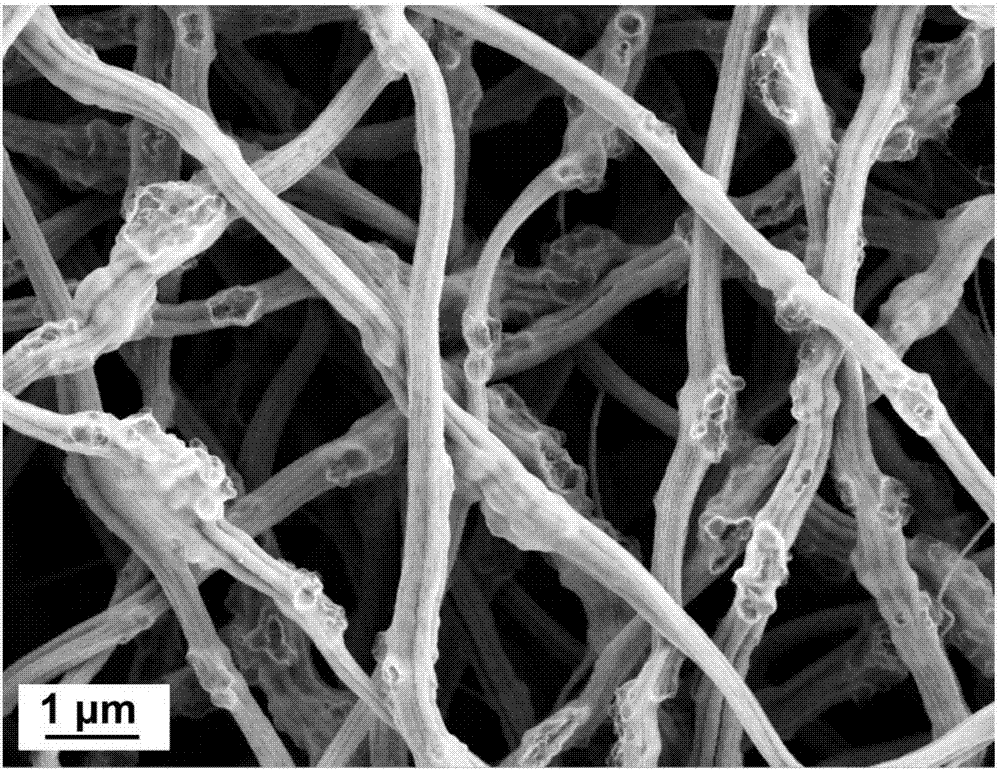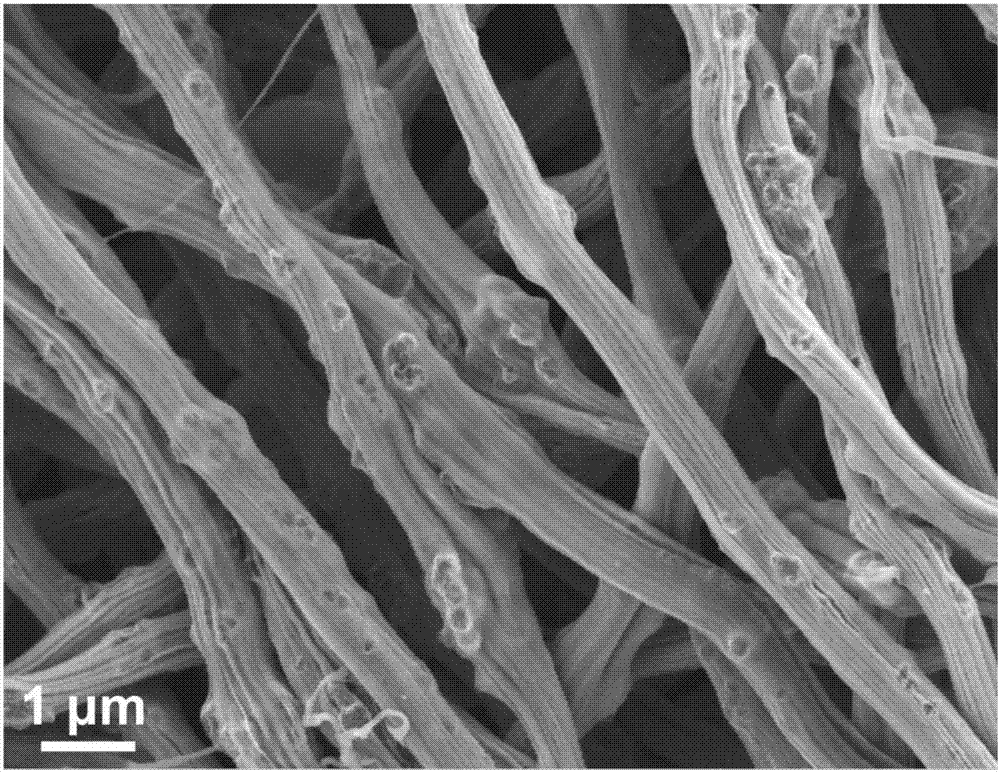Amorphous germanium dioxide/multi-tube carbon nanofiber and preparation method thereof
A technology of germanium dioxide and nanofibers, applied in the direction of nanotechnology, nanotechnology, nanotechnology for materials and surface science, etc., can solve the problems of low conductivity, unfavorable electron transmission, low and high current density capacity, poor rate performance, etc. problem, to achieve the effect of avoiding thickening phenomenon, improving cycle performance and improving rate performance
- Summary
- Abstract
- Description
- Claims
- Application Information
AI Technical Summary
Problems solved by technology
Method used
Image
Examples
Embodiment 1
[0033] (1) Weigh 2g of germanium dioxide powder with an electronic balance, and put it into a ball mill jar together with 50g of small balls with diameters ranging from 10 to 15mm for ball milling. The mass ratio of balls to materials is 25:1. The rotating speed of the ball milling tank was 300 rpm, and the ball milling was performed for 2 hours to obtain germanium dioxide nanoparticles.
[0034] (2) Weigh 0.16g of polystyrene and 0.8g of polyacrylonitrile with an electronic balance, place them in a 20ml sample bottle, and inject 9.2g of N-N dimethylformamide. Then accurately weigh 0.8 g of germanium dioxide nanometer powder and place it in the above-mentioned sample bottle, seal the sample bottle with a parafilm, heat to 60° C. and stir for 24 hours.
[0035] (3) Aluminum foil paper with a cut area of 40cm×40cm is attached to the flat collector, put 5 ml of spinning solution sample into the injection needle, connect the positive electrode of the high-voltage generator to th...
Embodiment 2
[0038] (1) Weigh 2g of germanium dioxide powder with an electronic balance, and put it into a ball mill jar together with 50g of small balls with diameters ranging from 5 to 15mm for ball milling. The mass ratio of balls to materials is 25:1. The rotating speed of the ball milling tank was 400 rpm, and the ball milling was performed for 3 hours to obtain germanium dioxide nanoparticles.
[0039](2) Weigh 0.24g of polystyrene and 0.8g of polyacrylonitrile with an electronic balance, place them in a 20ml sample bottle, and inject 9.2g of N-N dimethylformamide. Then accurately weigh 0.8 g of germanium dioxide nanometer powder and place it in the above-mentioned sample bottle, seal the sample bottle with a parafilm, heat to 60° C. and stir for 24 hours.
[0040] (3) Aluminum foil paper with a cut area of 40cm×40cm is attached to the flat collector, put 5 ml of spinning solution sample into the injection needle, connect the positive electrode of the high-voltage generator to the ...
Embodiment 3
[0043] (1) Weigh 2g of germanium dioxide powder with an electronic balance, and put it into a ball mill jar together with 50g of small balls with diameters ranging from 10 to 15mm for ball milling. The mass ratio of balls to materials is 25:1. The rotating speed of the ball milling tank was 300 rpm, and the ball milling was performed for 2 hours to obtain germanium dioxide nanoparticles.
[0044] (2) Weigh 0.48g of polystyrene and 0.8g of polyacrylonitrile with an electronic balance, place them in a 20ml sample bottle, and inject 9.2g of N-N dimethylformamide. Then accurately weigh 0.8 g of germanium dioxide nanometer powder and place it in the above-mentioned sample bottle, seal the sample bottle with a parafilm, heat to 60° C. and stir for 24 hours.
[0045] (3) Aluminum foil paper with a cut area of 40cm×40cm is attached to the flat collector, put 5 ml of spinning solution sample into the injection needle, connect the positive electrode of the high-voltage generator to th...
PUM
| Property | Measurement | Unit |
|---|---|---|
| Diameter | aaaaa | aaaaa |
| Diameter | aaaaa | aaaaa |
| Particle size | aaaaa | aaaaa |
Abstract
Description
Claims
Application Information
 Login to View More
Login to View More - R&D
- Intellectual Property
- Life Sciences
- Materials
- Tech Scout
- Unparalleled Data Quality
- Higher Quality Content
- 60% Fewer Hallucinations
Browse by: Latest US Patents, China's latest patents, Technical Efficacy Thesaurus, Application Domain, Technology Topic, Popular Technical Reports.
© 2025 PatSnap. All rights reserved.Legal|Privacy policy|Modern Slavery Act Transparency Statement|Sitemap|About US| Contact US: help@patsnap.com



